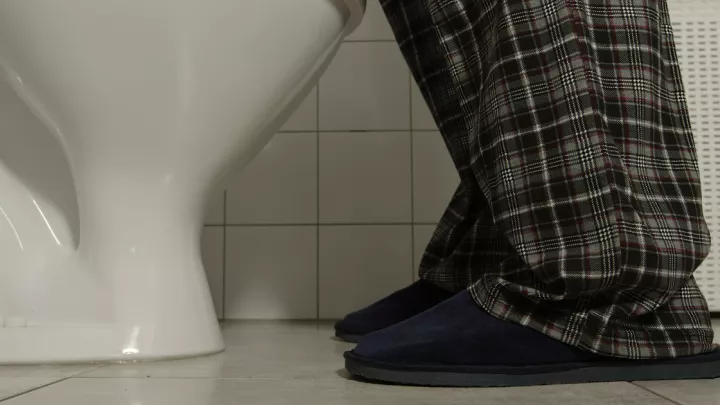I’ve got hip pain that concerns me


Many patients come to our office complaining of hip pain. A common concern is that they are going to need a hip replacement.
If you are bothered by hip pain, there can be several causes. The hip joint itself may be the issue; the cartilage that provides a cushion on the bone can erode over time. If the pain has started fairly recently and the pain is mild, we can consider steroid injection – which may help to significantly reduce the pain and allow people to get back to their normal activities. However, if the damage to the joint is significant, you may be a candidate for hip replacement. In those cases we work with our orthopaedics department to get you to the right place.
Not all hip pain comes from the hip
The pelvis is a dynamic structure and the joints and tendons surrounding the joint may cause pain that overlaps with the hip.
In fact, what feels like hip pain can actually be a problem with the sacroiliac joint. X-ray films may not show the whole picture. Unfortunately, a picture is not always worth a thousand words. In these cases, we may use tests called diagnostic blocks where we identify the painful joint by turning off the nerves that cover it. If we do identify this joint as the issue, we may consider procedures like steroid injections or radiofrequency ablations to reduce the pain associated with this.
Runners may develop this overuse injury
It might be trochanteric bursa, an inflammation of the bursa, the bump on the very outside of your hip. You might think that bump is hip bone, but it’s outside of the femur. It is covered by a small fluid filled bag that helps the muscles and tendons slide across the bone without getting caught. When this bursa gets inflamed, it can cause significant pain on the outside of the hip that can make it difficult to stand and walk. A lot of runners get this from running on uneven surfaces. But really, anyone with an uneven gate has a risk of developing this.
With a bursitis, you might feel the pain on the outside of your hip or thigh, or in the buttocks. It might be especially intense when you’re lying on your side – or when you try to get out of the car, or up from a low chair – or when you’re walking up stairs.
Giving the joint a rest is essential. We also work on reducing pain and inflammation, with medications like ibuprofen. Corticosteroid injections can quickly cut the inflammation in serious cases. Physical therapy, including range of motion exercises, also helps.
In most cases, if you can get past the initial phase of discomfort many of these will resolve slowly on their own, as long as the underlying problem is addressed.
Marathoners, cyclists and tennis player injuries
In some cases, it’s the iliotibial band (IT band) that’s causing problems. This is the band of fibers that runs from your pelvis, over the thigh, down to your knee. It’s an injury caused by overuse, and is often seen among long-distance runners, cyclists and tennis players.
Through overuse, the band gets irritated. While you may develop pain along the entire band, many people will have pain on the outside of the knee. This is the area where the band inserts. Over time, inflammation and eventual scarring can slow you down, as the pain becomes more frequent and more severe.
Whenever you feel pain, it’s a signal to take it easy. It’s time to rest. Start with ice to reduce inflammation; ibuprofen also helps. Then apply heat a day later to help increase the blood flow to the area. Physical therapy is also helpful for this as well as stretching and strengthening exercises. The IT band crosses the trochanteric bursa, so it is not uncommon for people to have both conditions simultaneously.
Other common overuse injuries
Iliopsoas bursitis is another common overuse injury of athletes and runners. It presents with anterior groin pain. You may even feel an associated pop when extending the hip. Much like the other injuries discussed. The first course of action is usually rest, ice and anti-inflammatories. If this is not enough, or the pain is persistent despite changes in your routine, we may consider an ultrasound guided injection of this bursa.
Hip pain comes in many forms, more than what’s been discussed here today. If you have persistent pain despite conservative treatment, you may need additional evaluation.
Is it time to see a Nebraska Medicine pain specialist? Call 402.596.4200 to make an appointment at a location near you.




